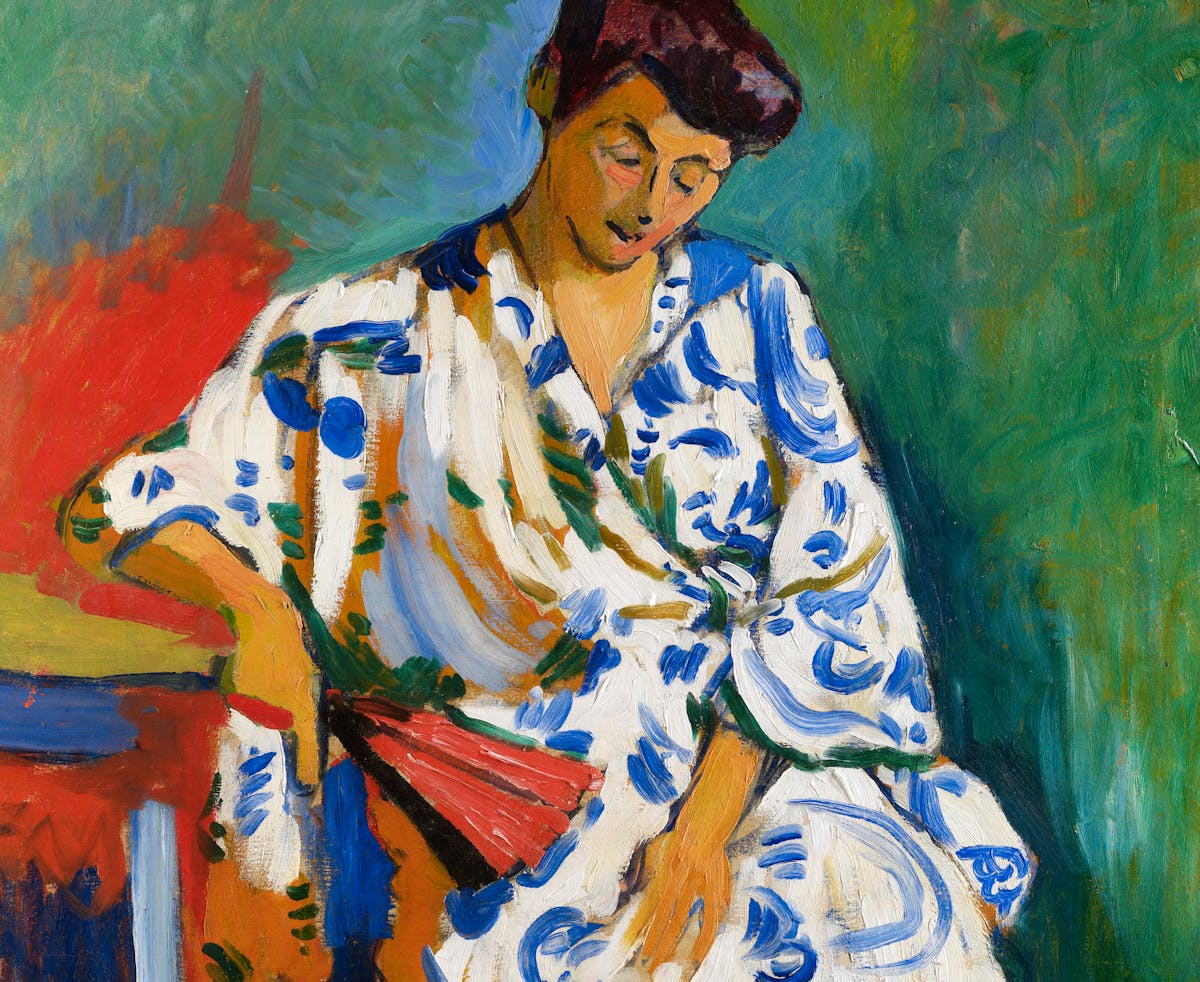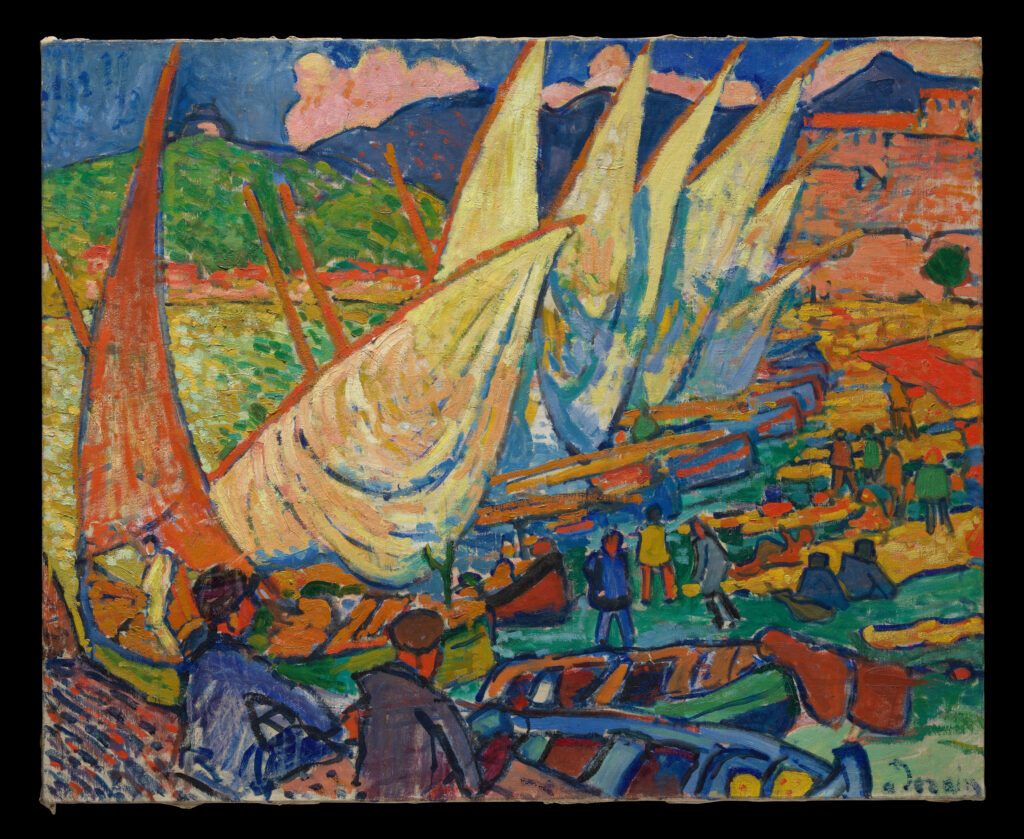‘Wild Beasts’ at Large at the Met
A new show looks at ‘Fauvism’ and delivers a dream of summer color for New York’s drab decline into winter.

“Vertigo of Color,” at the Metropolitan Museum of Art, is the first American exhibition to center on the explosion of color known as “Fauvism.” From the French for “wild beast,” the movement is here presented as the painterly prodigy, born in the summer of 1905, of two artists, Henri Matisse and André Derain. The show, open through the beginning of the new year, is a dream of summer color for New York’s drab decline into winter.
Influenced by Van Gogh, Cezanne, and Seurat, les Fauves disdained realistic representation in favor of brilliant palettes, expressive reaction, and the use of color to depict light and space. Nature was often the setting, but the style was subjective, slanted, and synthetic. Color was keyed to the artist’s experience rather than the surface of the subject. In its abstract gestures, one can see shimmers of 20th century art’s fertile rebellions.
Fauvism waxed for only a few years, between 1905 and 1908. Its name was originally an insult from a critic, Louis Vauxcelles, who saw some of their work at a Paris exhibition in 1905. He called a classical sculpture situated amidst the colorful canvases “Donatello chez les fauves,” or “Donatello among the wild beasts.” The name stuck, even if the movement was overtaken by Pablo Picasso’s Cubism as the edge of the avant-garde.
The critic Jed Perl calls Cubism the “most thoroughgoing transformation of the grammar of painting since the beginning of the Renaissance,” but the Fauvist works at the Met strike one as more playful than revolutionary, less manifestos on canvas than sun-stroked experiments. It is true that they generated scandal at the stuffy Salon d’Automne, but a visitor to “Vertigo” lands more comfortably in the long 19th century than the early 20th one.

Lila Acheson Wallace Gift, © 2023 Artists Rights Society.
This despite the work of the show all being produced in the summer months of 1905, at Collioure, a sleepy fishing village on the French Mediterranean. Derain and Matisse, working with paint straight from the tube, brushstrokes in thick impasto, painted ports and cork trees, each other, and Matisse’s wife, Amélie. It was like everything they saw that summer was through kaleidoscopes of color.
Derain was the younger painter, and it shows. It is Matisse’s works that pop off the walls at “Vertigo.” A good place to start is the master’s “Open Window, Collioure,” a vision of the town’s port framed by flung open fenetres. Boats bob in the background, a kind of painting within the painting. The whole scene, though, is washed in pink, offset by zones of its near color wheel opposite, hunter green. The colors are not just surfaces — they are the stars.
“Madame Matisse in the Olive Grove,” by the sitter’s husband, applies the rainbow to Seurat’s pointilist style, yielding a sunburst of shapes so stimulating that it operates almost like an illusion — find Amélie, if you can. The soft fleshtones of “Nude in a Wood” are all the more remarkable for the grassy greens that envelop them. The sharp bend of Amélie’s leg and the slope of her back testify to a lingering yet flickering commitment to realism.
The show’s signature painting, though, is Derain’s. “Woman with a Shawl, Madame Matisse in a Kimono” depicts the artist’s wife seated against a background of lava-like red and, again across the color wheel, that same deep green. Her person is grand, but Derain’s attention was clearly caught by her extraordinary kimono. A bulk of white fabric — an absence of color amid a cult of color — is speckled with blue swirls, as if it is a pattern of both sky and sea.
“Young Sailor II,” by Matisse, dates from 1906, and is part of the show’s peek beyond Collioure. It signals a different direction. The background is a muted pink, not a psychedelic one. The palette as a whole is soft, almost soothing. The sailor’s limbs are elongated and distended, almost gargantuan. Rather than unruly waves of color, the painting is ordered into zones. It is not a renunciation of the summer style, but something like its maturation.
For a last look at “Vertigo,” one could do worse than “The Palace of Westminster.” Derain completed it after Collioure, and amid its somber blues and greens — it captures London’s dreary grandeur — there appear, shimmering on the Thames, pools of yellows and oranges, an inheritance of summer days and Fauvist style. Unlike Matisse, Derain never returned to Collioure, but this landscape insists that the beautiful and beastly never left him, either.

